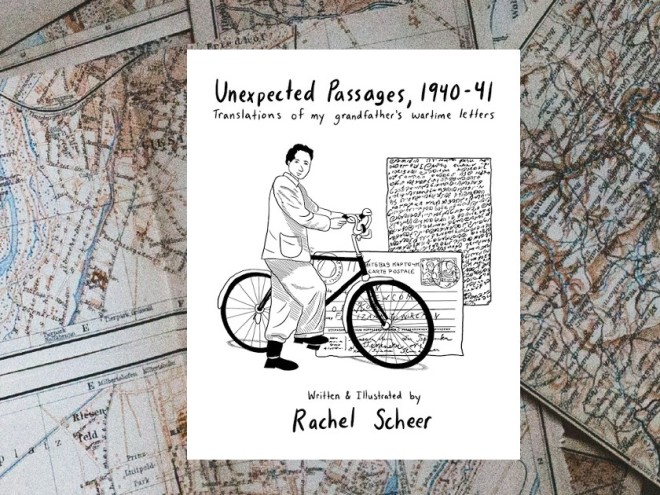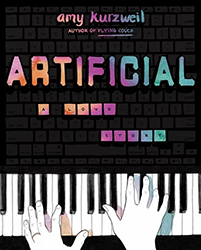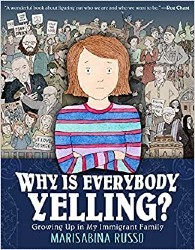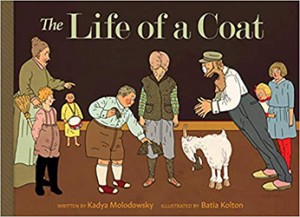Rachel Scheer’s graphic memoir is compact, understated, and carefully composed. Using her grandfather’s letters — and the story of how she had them translated from Yiddish — as a starting point, Scheer has created an elegant meditation on Jewish identity and its connection to the past. Black-and-white drawings depict copies of the original letters, cartoon panels, and blocks of text, all of which are accompanied by simple yet expressive renderings of herself and members of her family. Clearly presented historical information is combined with honest reflection to produce an unusual book about one European Jewish refugee and the legacy he left for his American descendants.
Readers first learn what Yiddish is and how it was nearly totally annihilated along with its speakers. Scheer’s grandfather, Irving, had left behind a box of letters, which gradually impelled her to explore his past. Irving’s name alone represents the fluidity of the language: in various documents, he is identified as “Isaak Gvertsman,” “Izaak Gwircman,” and “Irving Gwertzman,” evidence of the linguistic and cultural variety that characterized the lives of Jewish immigrants. When the young Scheer first encountered the letters, she asked her mother, “What’s Yiddish?” Her mother had attended Yiddish language school as a child but remembered too little to decipher her father’s correspondence. The book represents Scheer’s attempt to close all these generational gaps.
The Scheer family’s survival was enabled by Japanese diplomat Chiune Sugihara, who issued visas to thousands of Lithuanian Jews. These fortunate people fled to Russia, Japan, and eventually Shanghai, China. Rather than emphasizing the heroic or fateful aspects of this story, Scheer traces the details of her grandfather’s life. She’s careful not to let world events subsume personal ones. On one page, entitled “Shtetl Romance,” Scheer introduces a cast of characters who appear in the letters, individuals rendered enigmatic by the missing pieces of their intertwining narratives. A young woman named Mira writes to Irving, “I don’t have anything important to tell you and some trivialities about me might not interest you. Who knows? It is not possible to creep into another’s heart.” Later, Mira writes, “I had a very nice coat made. I will send you a picture. It isn’t finished yet.” Our knowledge of the impending tragedy hovers over every anecdote. Scheer is illuminating not only her grandfather’s life, but also the lives of those who did not survive.
Scheer situates her own artistic goals and family relationships within the context of her grandfather’s story, without simplistically equating their respective challenges. She compares herself to Idith, Lot’s wife, who is unnamed in the biblical story but identified in a midrash. When she cannot refrain from looking back at her home, she is turned into a pillar of salt. Seeing the inherent tension in two conflicting Jewish values — “don’t look back” and “never forget” — Scheer acknowledges that such admonitions have marked both her own history and that of the Jewish people. Her consideration of this paradox is earnest, supported by sharply executed images of past and present.
Emily Schneider writes about literature, feminism, and culture for Tablet, The Forward, The Horn Book, and other publications, and writes about children’s books on her blog. She has a Ph.D. in Romance Languages and Literatures.





